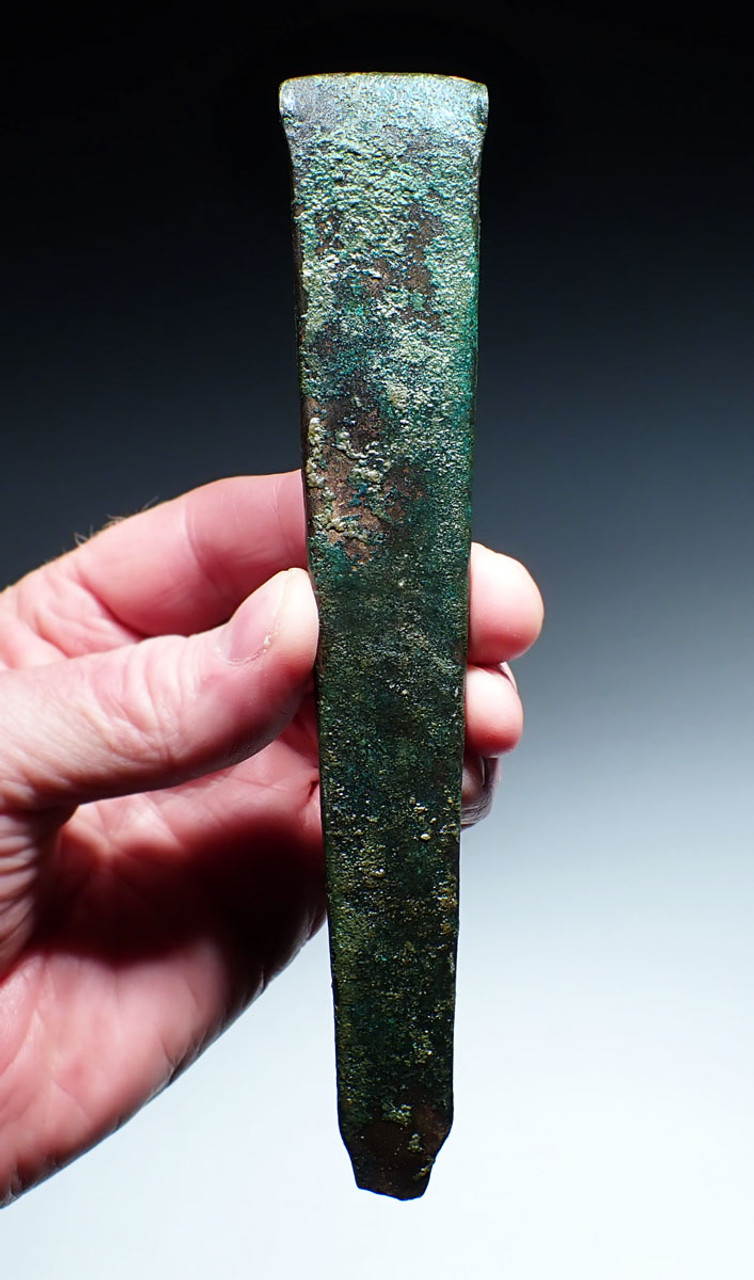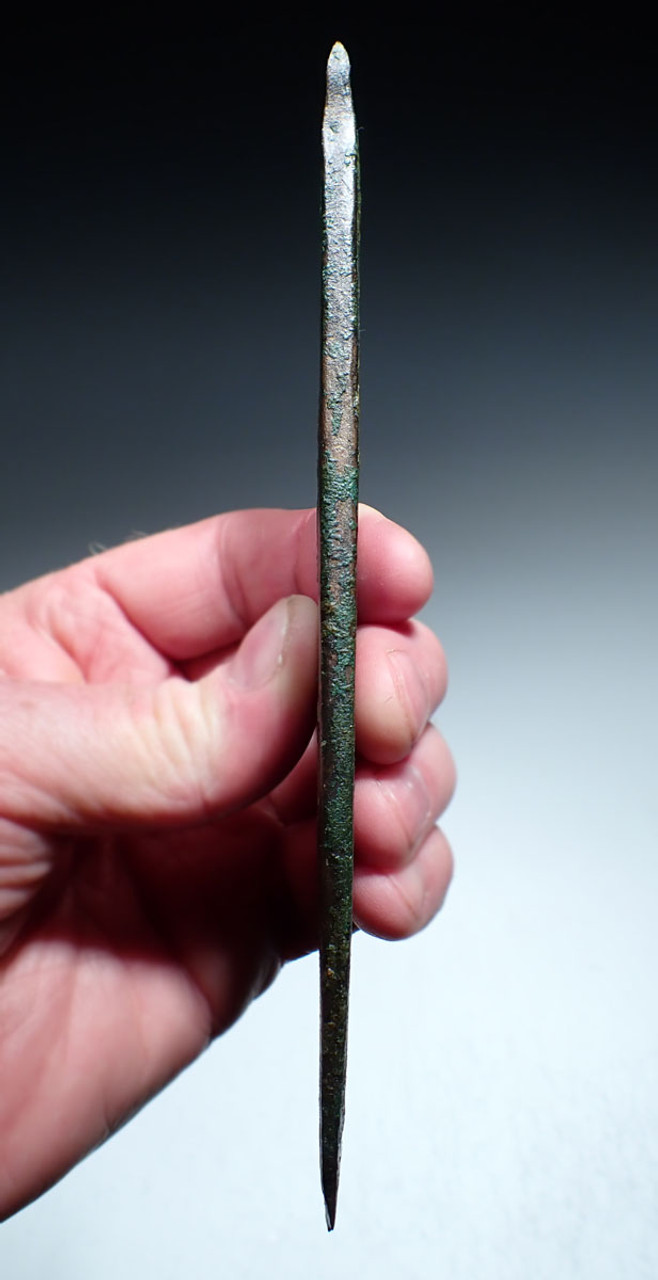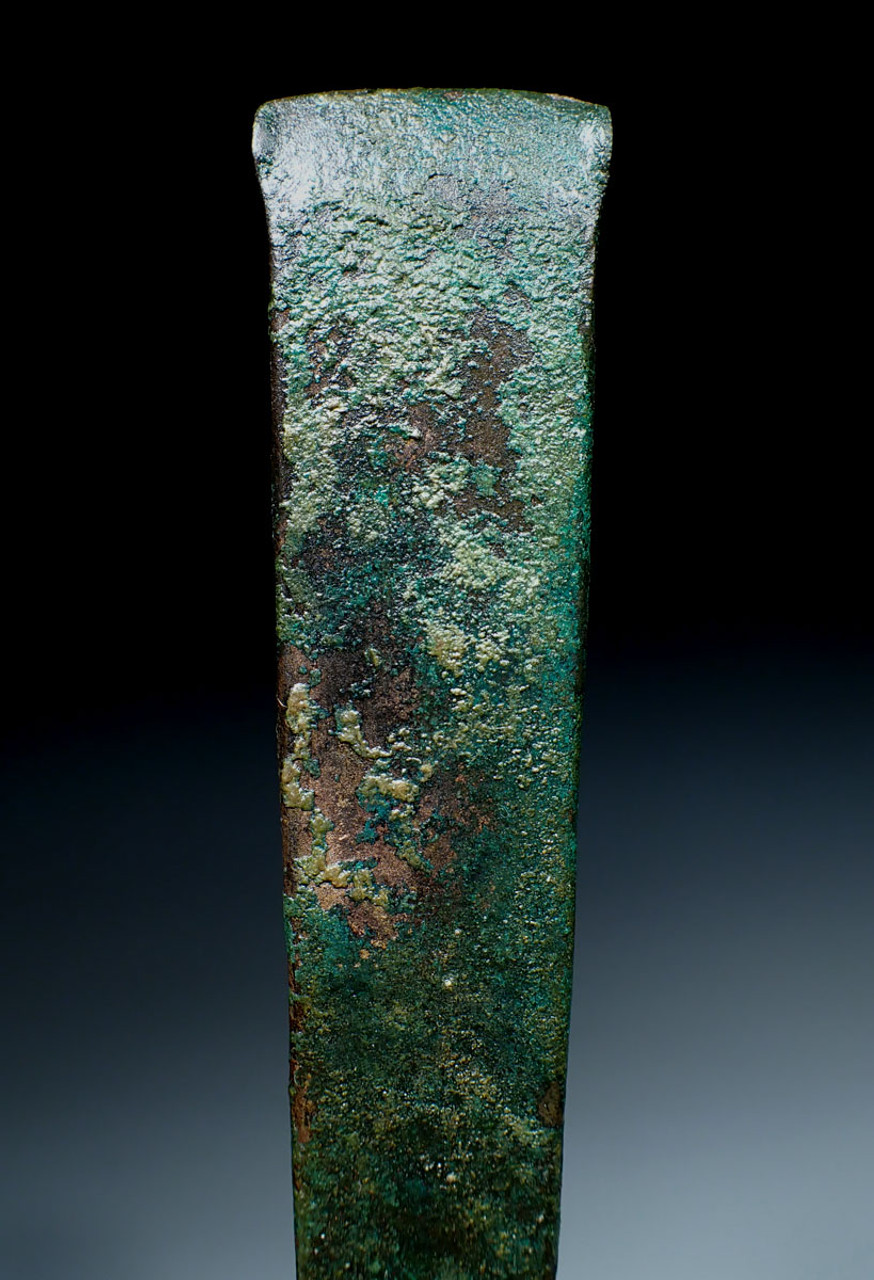Product Description
SEE MORE ANCIENT NEAR EASTERN LURISTAN ARTIFACTS
The first metal axes date back to the earliest metal ages of the Chalcolithic and Early Bronze Ages. These were flat axe designs cast in open sand molds and simple carved stone molds. This exceptionally well-preserved and complete ancient copper bronze specimen is of that earliest flat axe design. It comes from the region regarded as the "Cradle of Civilization" - the Fertile Crescent, and dates back to the Early Bronze Age.
Flat axe blades of this type would have been affixed to an L-shaped wooden shaft handle and used both, as a tool for wood-working, and also as a weapon. These flat axes were also some of the FIRST hand-held weapons made of metal. Their long narrow blade would have been very effective in piercing soft body armor and inflicting fatal blows to the head.
This specimen shows superb ancient encrustations over the metal. It has been professionally cleaned and conserved in our lab, being treated with a special sealer developed and formulated by us specifically for ancient metal preservation. The patina shows beautiful traits only found in authentic ancient metal objects. It is a patina like this that the finest ancient bronzes are prized for and it is a patina like this that brings a premium in price and value of the specimen. There is no active bronze disease. Bronze disease can be a problem in bronze artifacts and untreated, it can literally eat away an artifact over a short period of time and destroy it.
WARNING: There is an increasing number of fake Near Eastern (Luristan) bronze weapons on the market. As fine quality intact, original specimens become more scarce and techniques have become more sophisticated to fake these weapons. We have personally handled numerous extremely well-done fakes with extremely convincing patinas. The degree to which the fakers have been able to replicate patina to disguise their work requires an expert examination by highly experienced individuals. It is common to find very reasonably priced weapons that are made up of part original and part modern components or wholly modern pieces displaying elaborate artificial patinas. All purchases should include from the dealer a written guarantee of authenticity with unconditional and lifetime return policies regarding such guarantee.
HISTORY
The ancient Near East (including Mesopotamia and the Fertile Crescent) is considered the cradle of civilization. The Fertile Crescent is believed to be the very first region where settled farming emerged as people started the process of clearance and modification of natural vegetation to grow newly domesticated plants as crops. Early human civilizations such as Sumer in Mesopotamia, flourished as a result. It was here that intensive year-round agriculture was first practiced, leading to the rise of the first dense urban settlements and the development of many familiar institutions of civilization, such as social stratification, centralized government and empires, organized religion and organized warfare. It also saw the creation of the first writing system, the first alphabet (abjad), the first currency in history, the first law codes, early advances that laid the foundations of astronomy and mathematics, and the invention of the wheel. During the period, states became increasingly large, until the region became controlled by militaristic empires that had conquered a number of different cultures.
The mace was developed during the Upper Paleolithic from the simple club, by adding sharp spikes of either flint or obsidian. In Europe, an elaborately carved ceremonial flint mace head was one of the artifacts discovered in excavations of the Neolithic mound of Knowth in Ireland, and Bronze Age archaeology cites numerous finds of perforated mace heads. In ancient Ukraine, stone mace heads were first used nearly eight millennia ago. The others known were disc maces with oddly formed stones mounted perpendicularly to their handle.
The problem with early maces was that their stone heads shattered easily and it was difficult to fix the head to the wooden handle reliably. The Egyptians attempted to give them a disk shape in the Predynastic period (about 3850–3650 BC) in order to increase their impact and even provide some cutting capabilities, but this seems to have been a short-lived improvement. A rounded pear form of mace head known as a "piriform" replaced the disc mace in the Naqada II period of Pre-dynastic Upper Egypt (3600–3250 BC) and was used throughout the Naqada III period (3250–3100 BC). Similar mace heads were also used in Mesopotamia around 2450–1900 BC.
 US DOLLAR
US DOLLAR
 EURO
EURO
 AUSTRALIAN DOLLAR
AUSTRALIAN DOLLAR
 CANADIAN DOLLAR
CANADIAN DOLLAR
 POUND STERLING
POUND STERLING


















